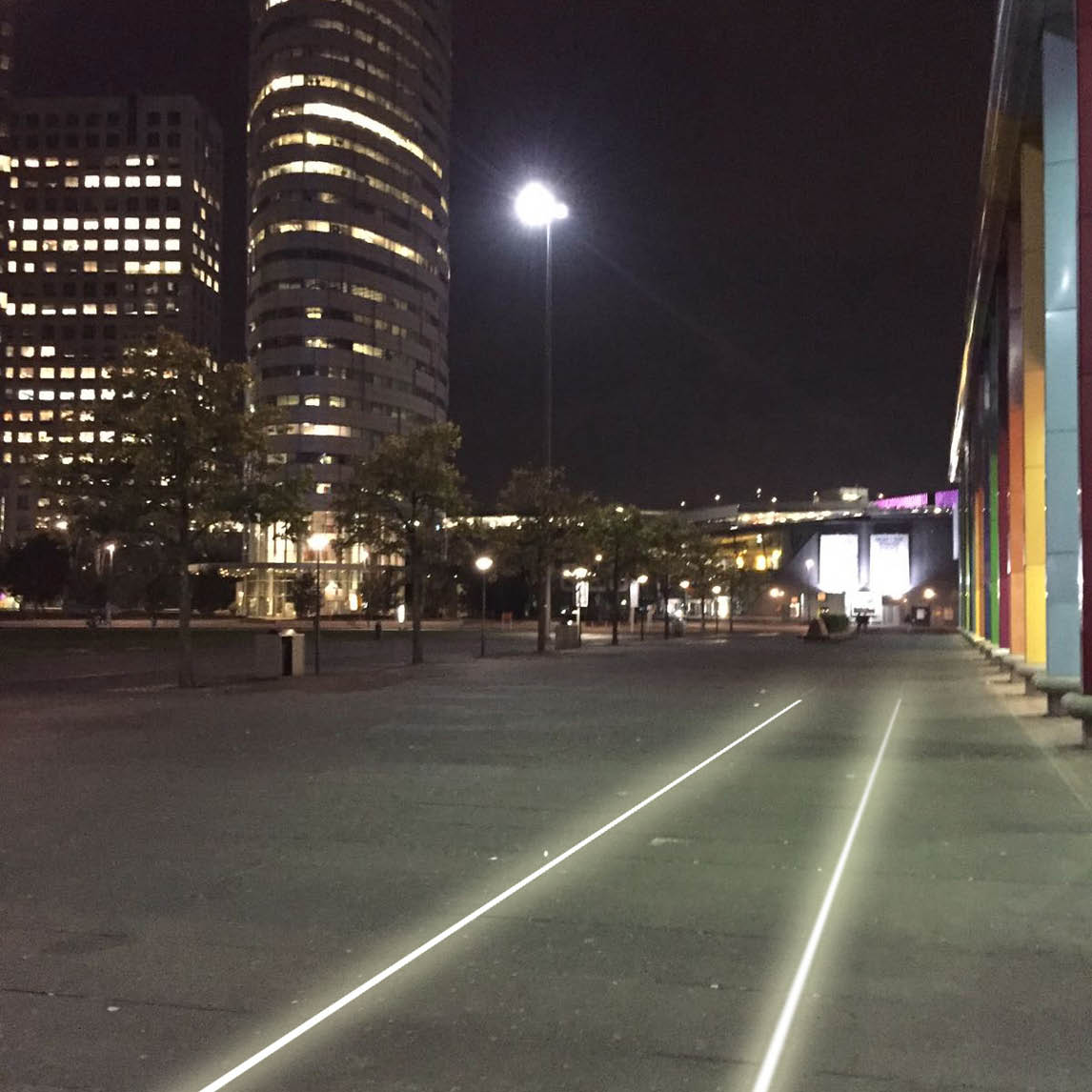
Interventions
test and measure
Solutions are explored, in co-creation with project partners, to improve the routing and spatial attractiveness of the public space. A selection of these solutions/interactive objects is planned to be build and tested on the ArenA boulevard. The impact of the interactive installations will be analyzed using before-and after measurements.
Below you can find a few examples of interventions for further reference.
Sense of place & COLLECTIVITY
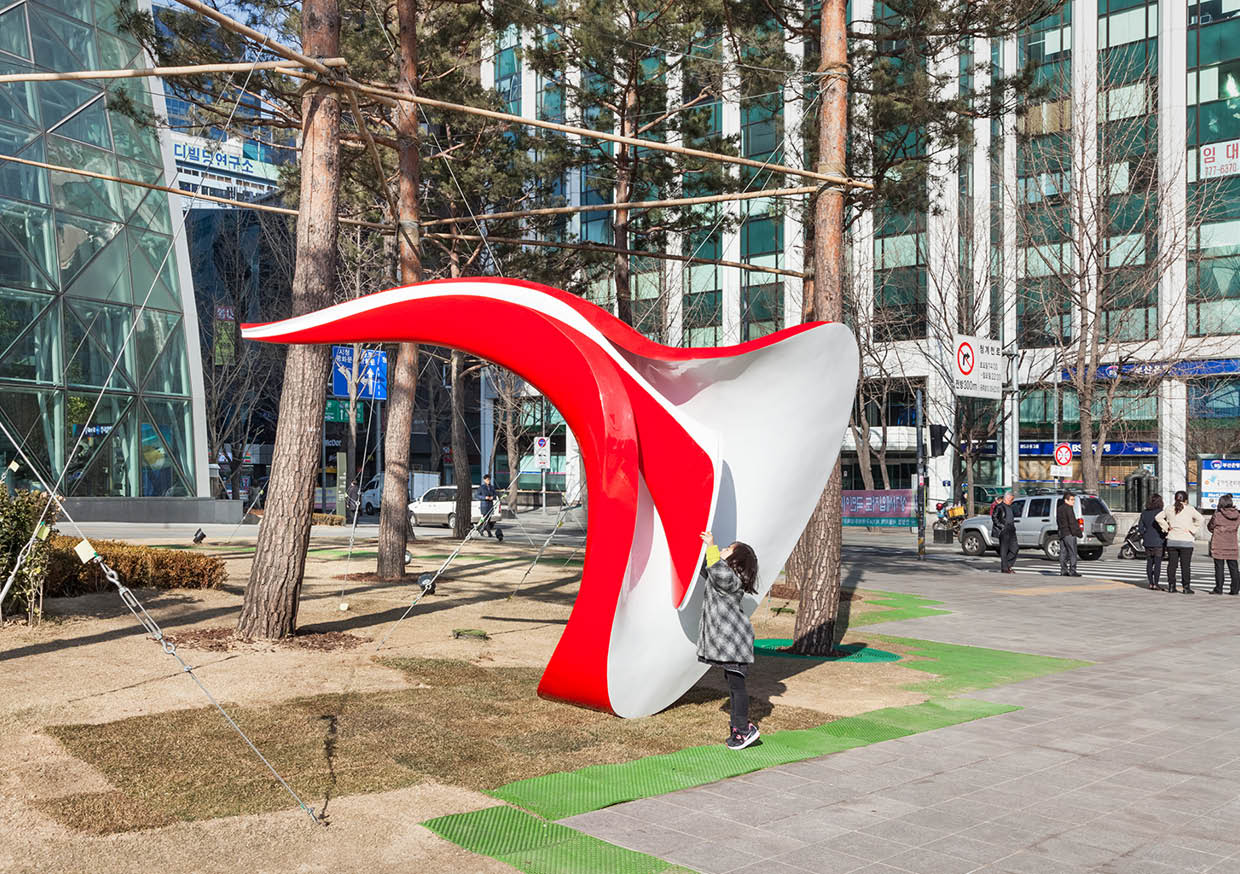
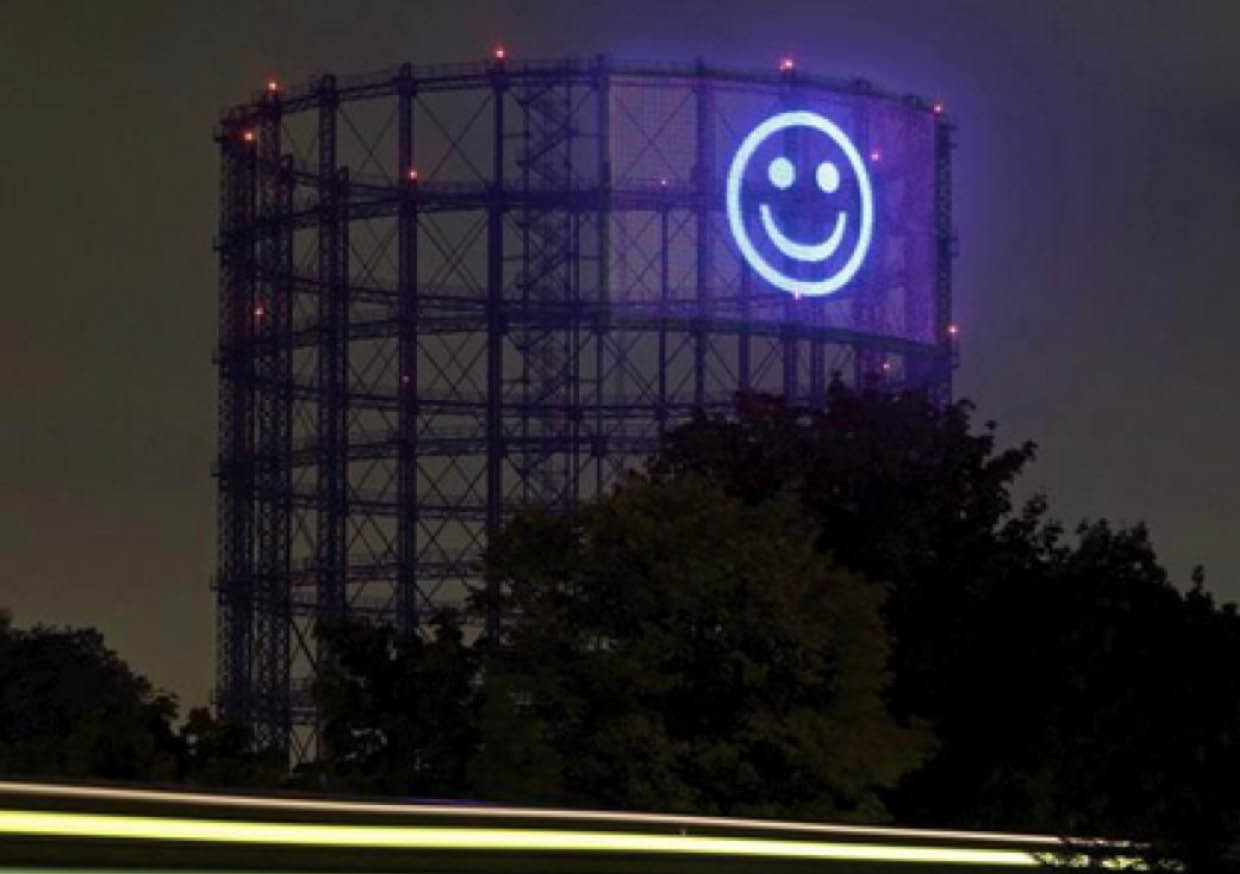
How can interactive installations enrich and enhance the place, while making it more adaptive? How can the combination of spatial design and media installation strengthen the identity of a place? Can we make it visible what happens at different hours and locations (e.g. behind the facades)? Can we visualize rhythms of the place or emphasize specific elements that characterize the place? For example, visualizing the pedestrian flow before and after a concert, event or soccer match?
PLACEMAKING
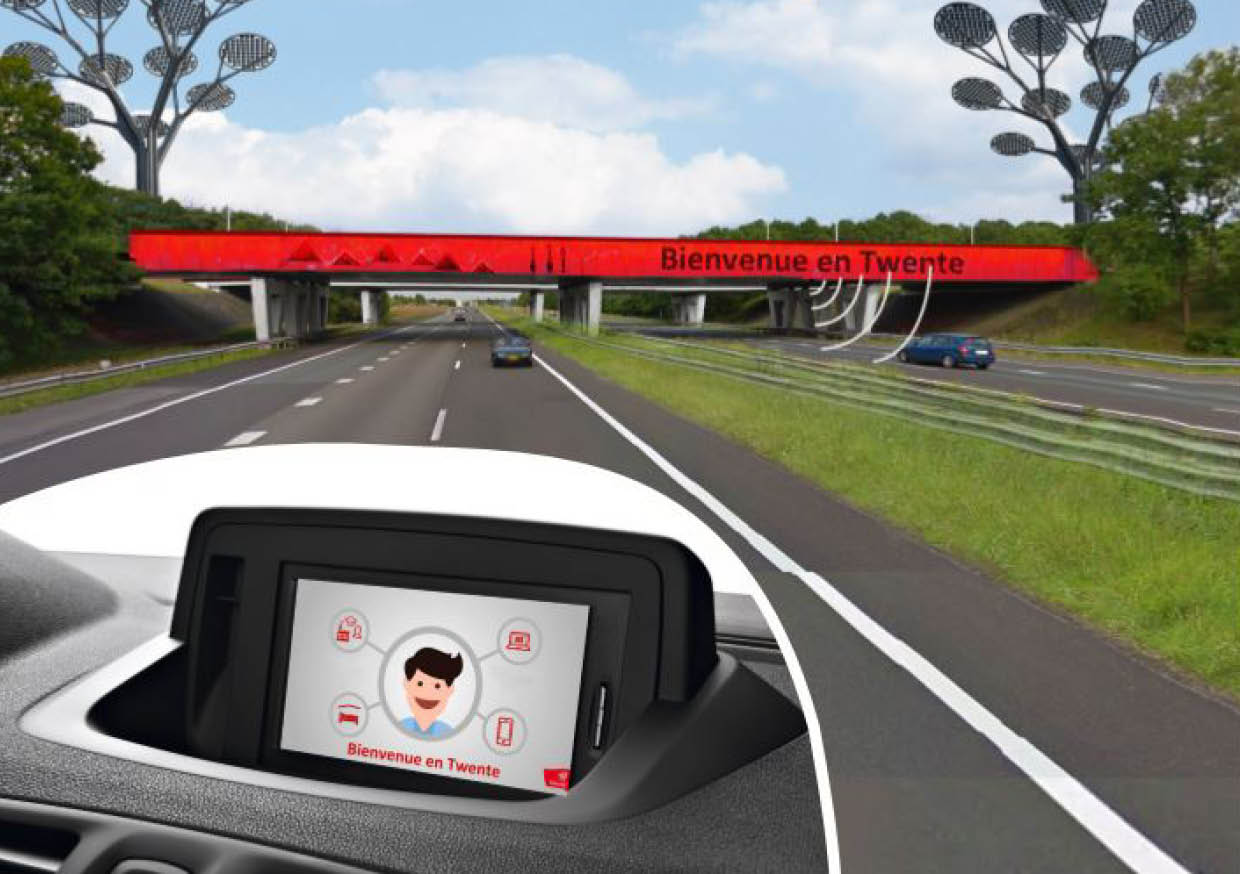
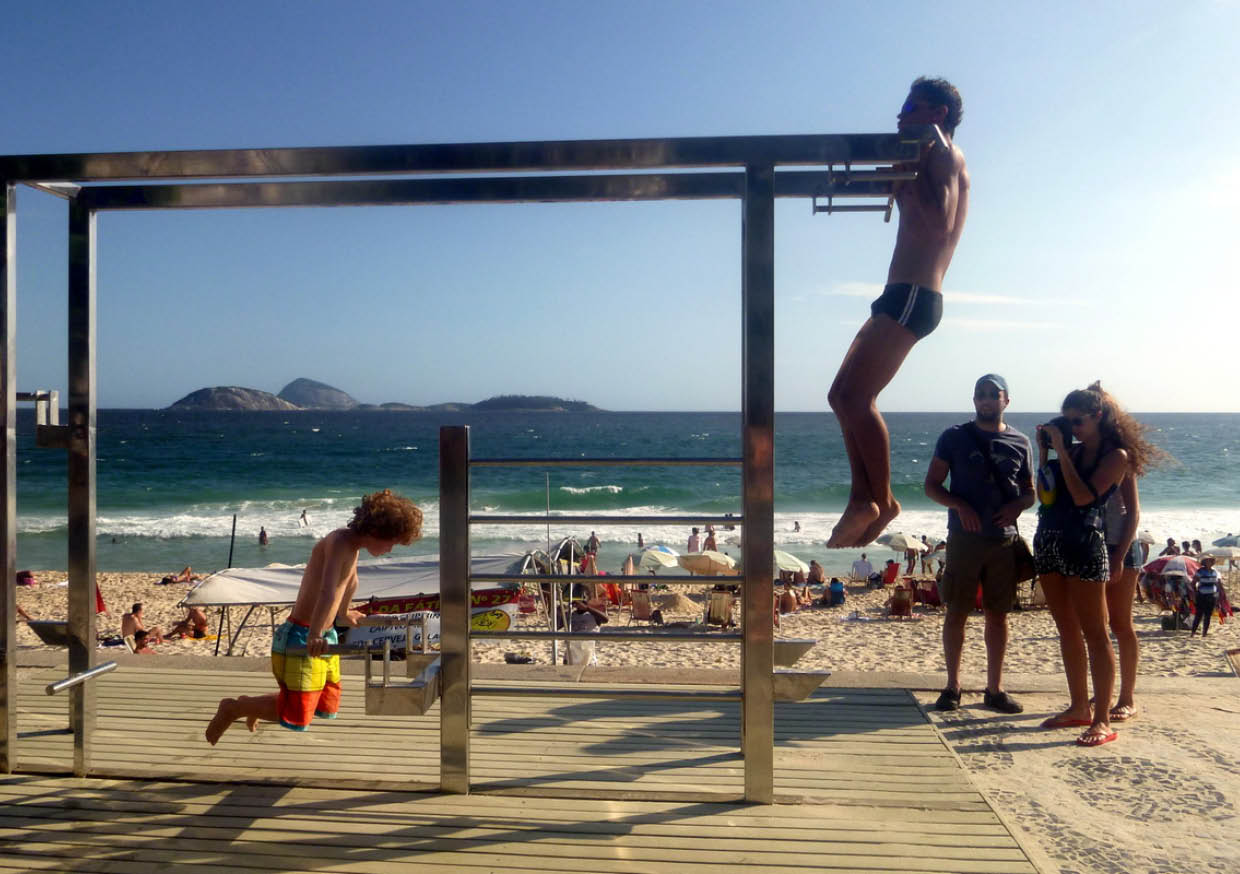
How can interactive installations ‘reduce’ large-scale places into human-centered spaces? For example, developing places on a more human scale to offer “shelter” for more inviting spaces. In other words: How can you allow visitors to claim space of their own? How can you capture and share meaningful experiences?
PLAYFUL INTERACTION
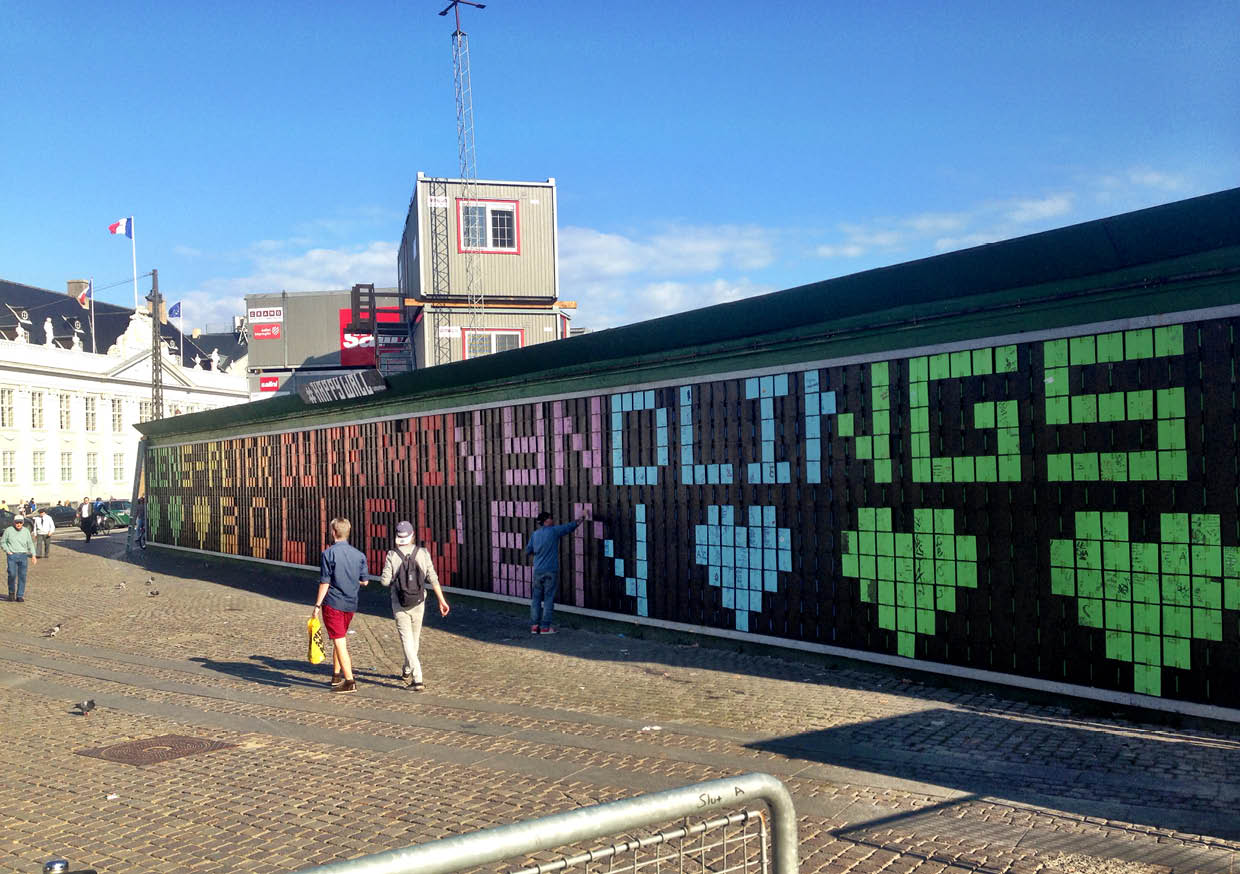
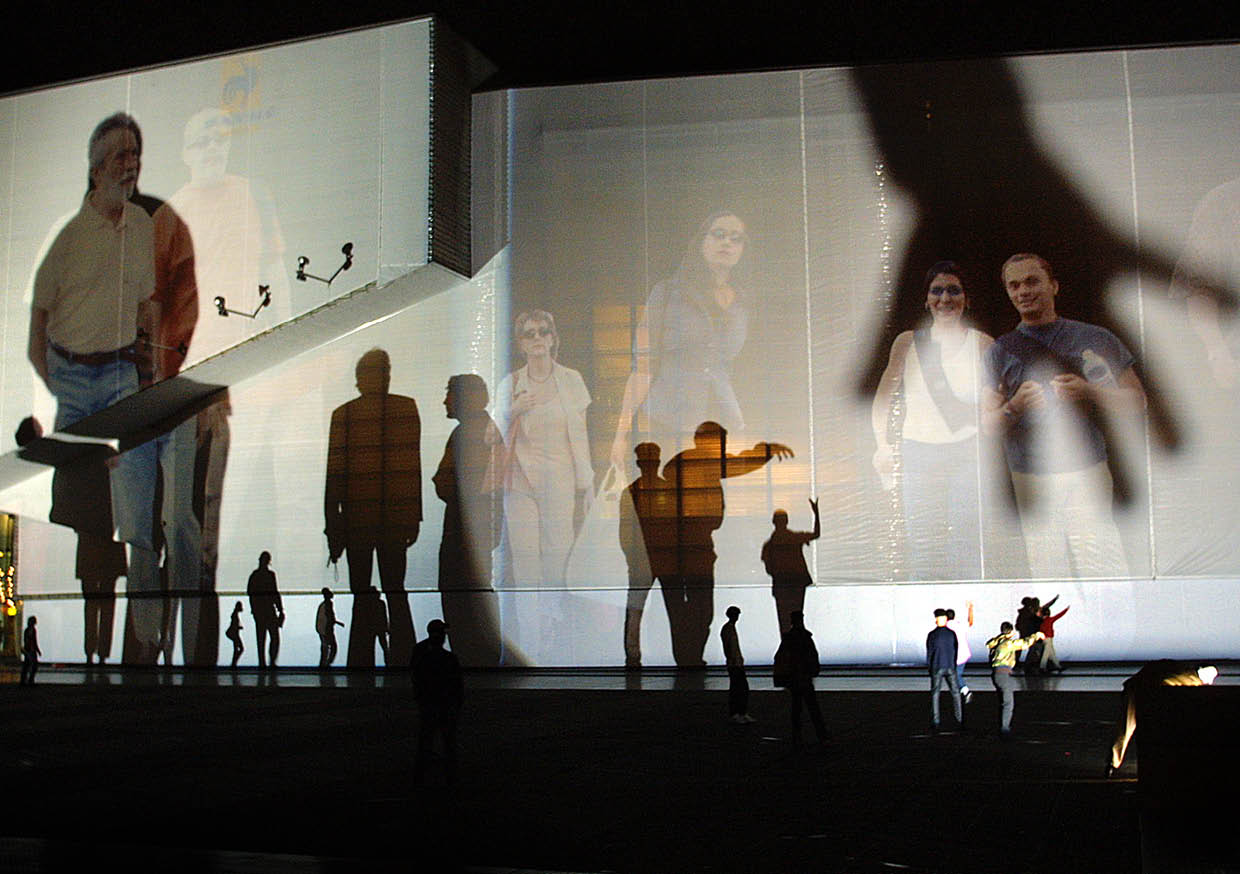
How can interactive installations make space more interesting and surprising for visitors? For example, by telling stories, staging interactive characters, facilitating ‘playful interaction’ or short encounters around ‘conversation pieces’.
ROUTING
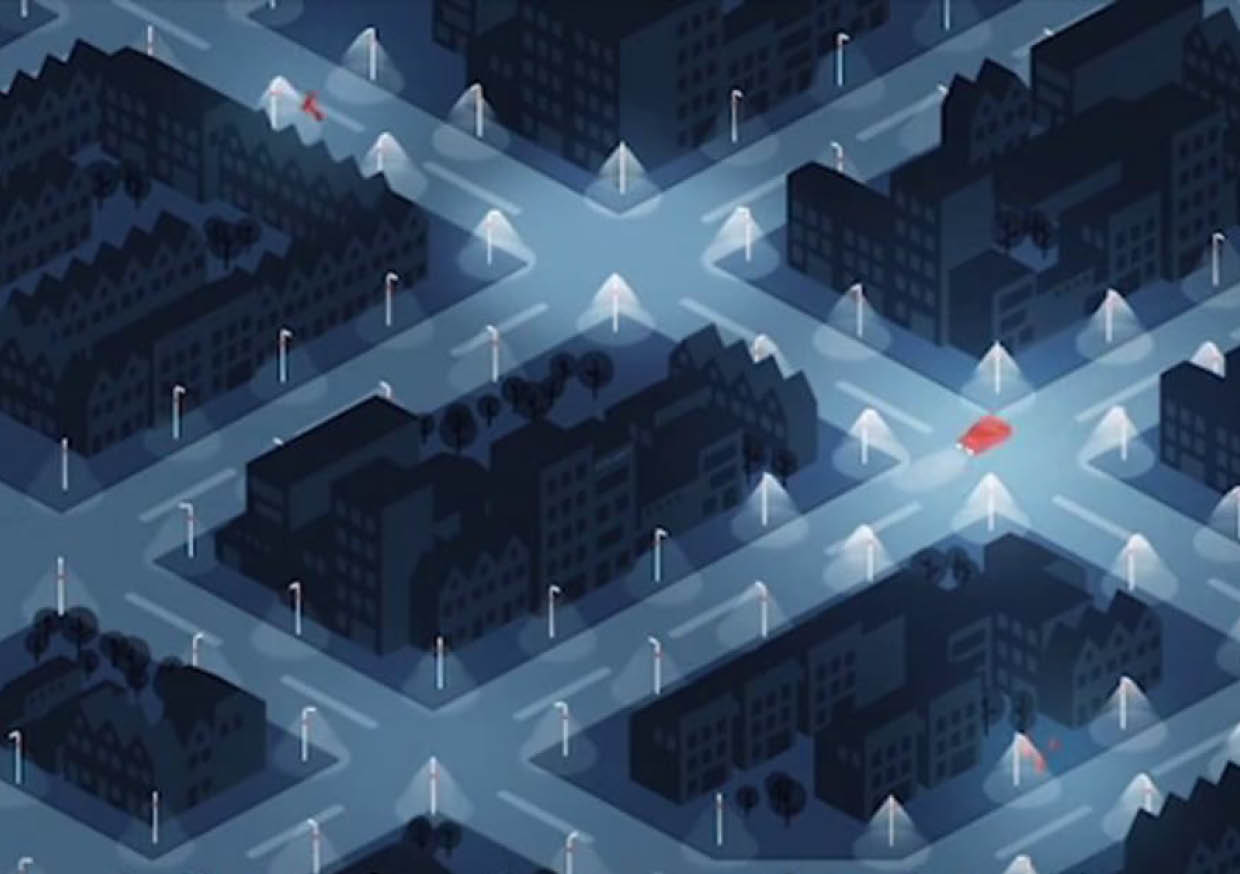
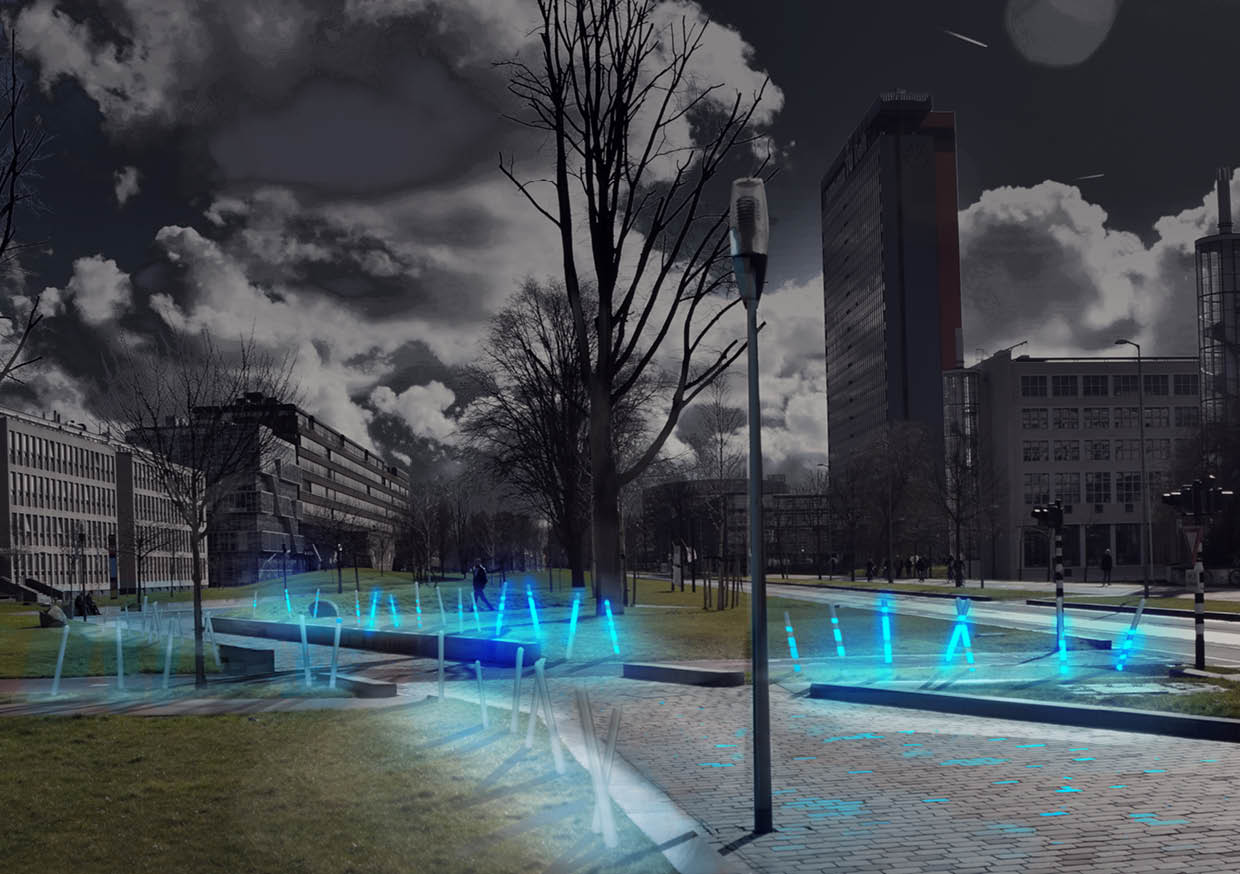
How to make a space ‘readable’? How can we provide visitors an overview of the different activities of each place? How can we inform visitors about interesting places and assist them in the right direction? How can we improve the way-finding process ? How can we configure the space not only functional but appealing as well? For example, in the routing, creating a sequence of elements as part of a collective identity or making the routing more intimate?
Inspiration
Tweenbots
by Kacie Kinzer www.tweenbots.com are human-dependent robots that navigate around the city. They carry a flag with their destination attached to them. Moving in a straight line and in one speed, means that they are depending on the people they encounter to put them in the right direction to reach their final destination.
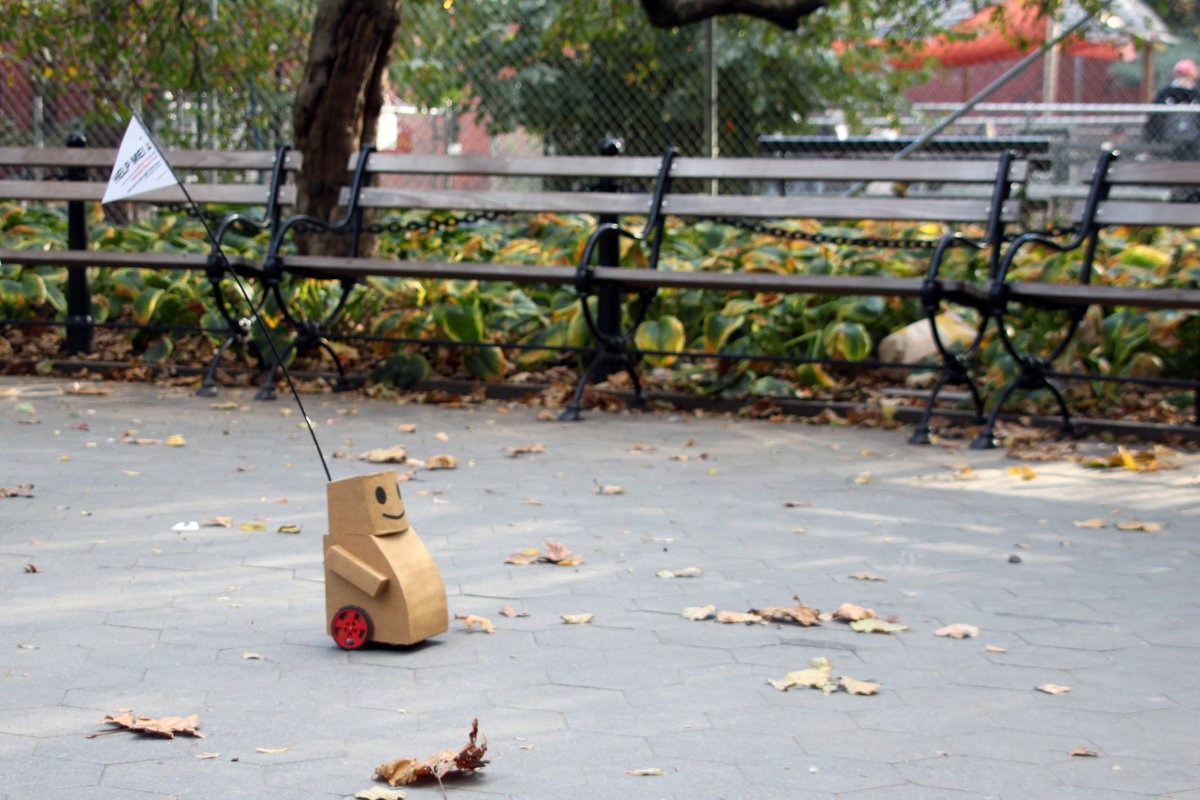
Low tech interventions
How can we influence the use of space, adding for example, a pattern on the pavement? Project for further reference from Barcelona. http://ajuntament.barcelona.cat/superilles/ca
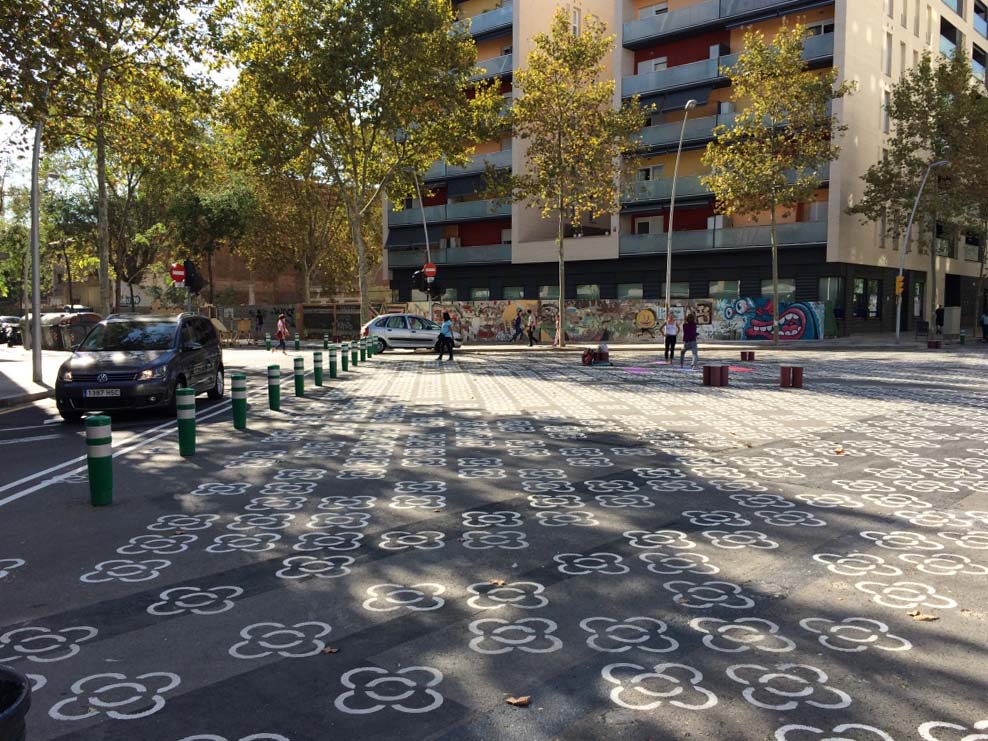
Credits

Lifethings | Yobosayo | 2013

Public Face | Julius of Bismarck, Richard Wilhelmer and Ben Maus | Media Facades Festival Berlin 2008 Photo Credits: Public Art Lab

Projectie op viaduct A1 | Theo de Bruijn van IAA

Body Movies, Relational Architecture 6 | Rafael Lozano-Hemmer | 2001

Blades | Teun Verkerk
